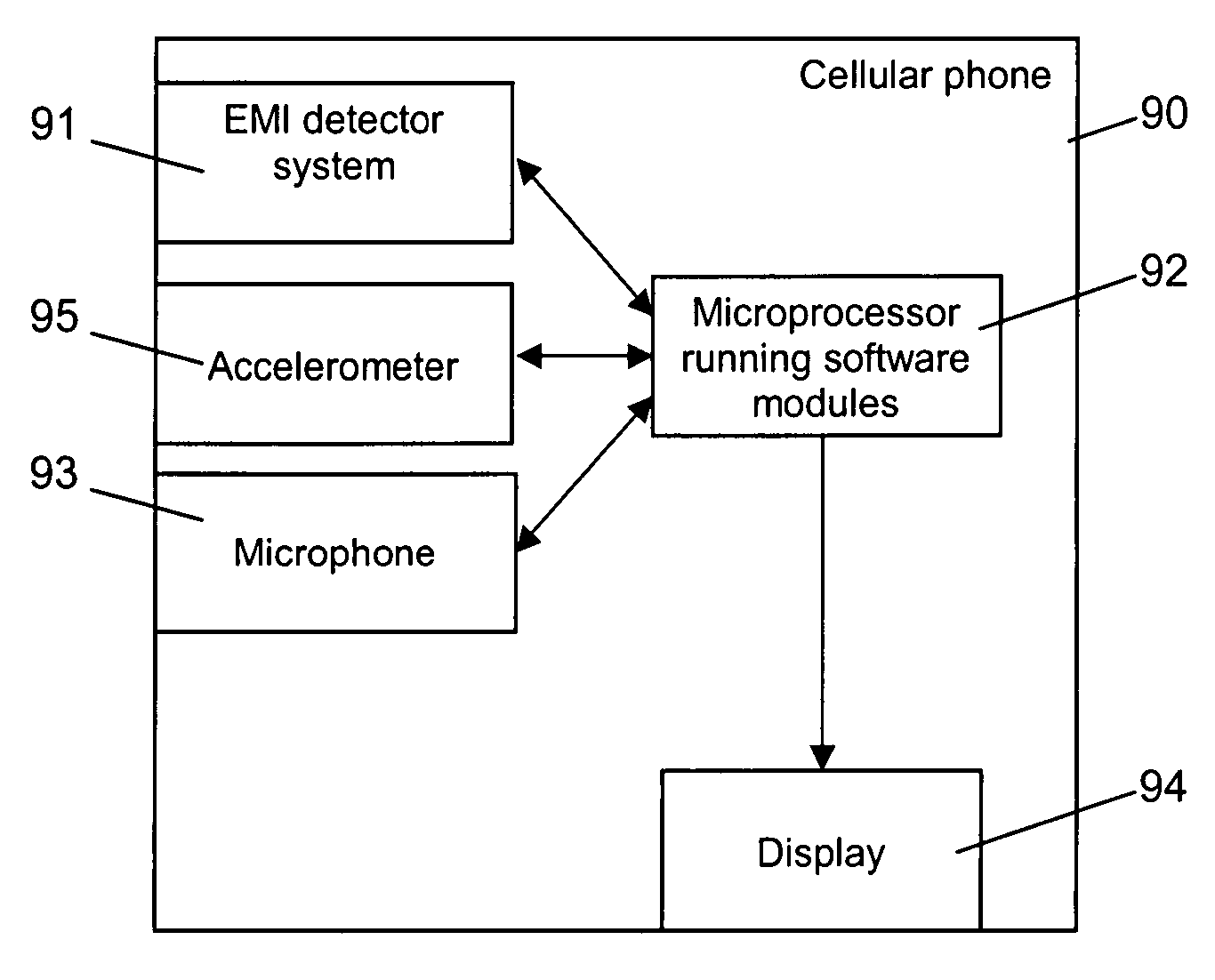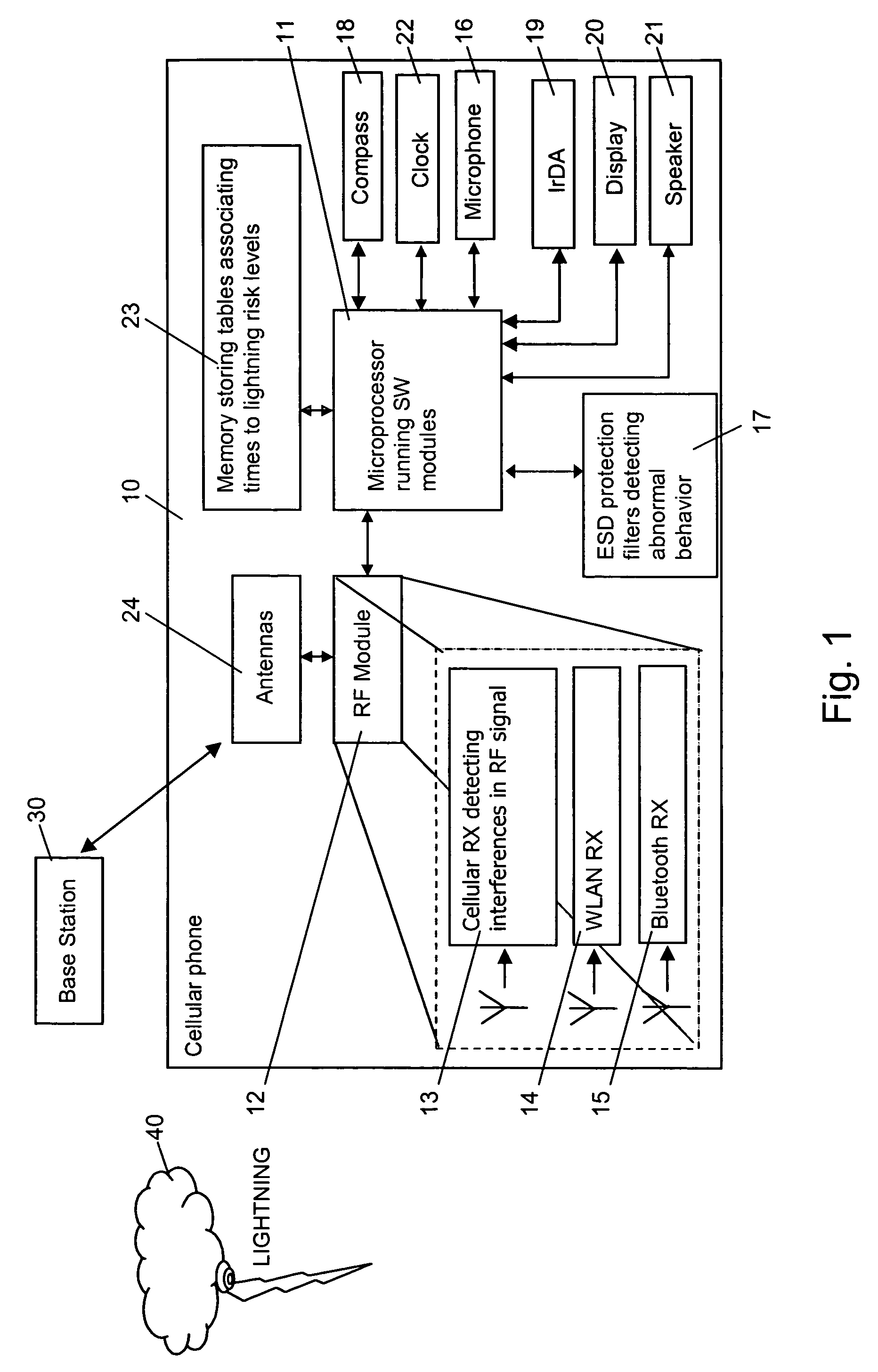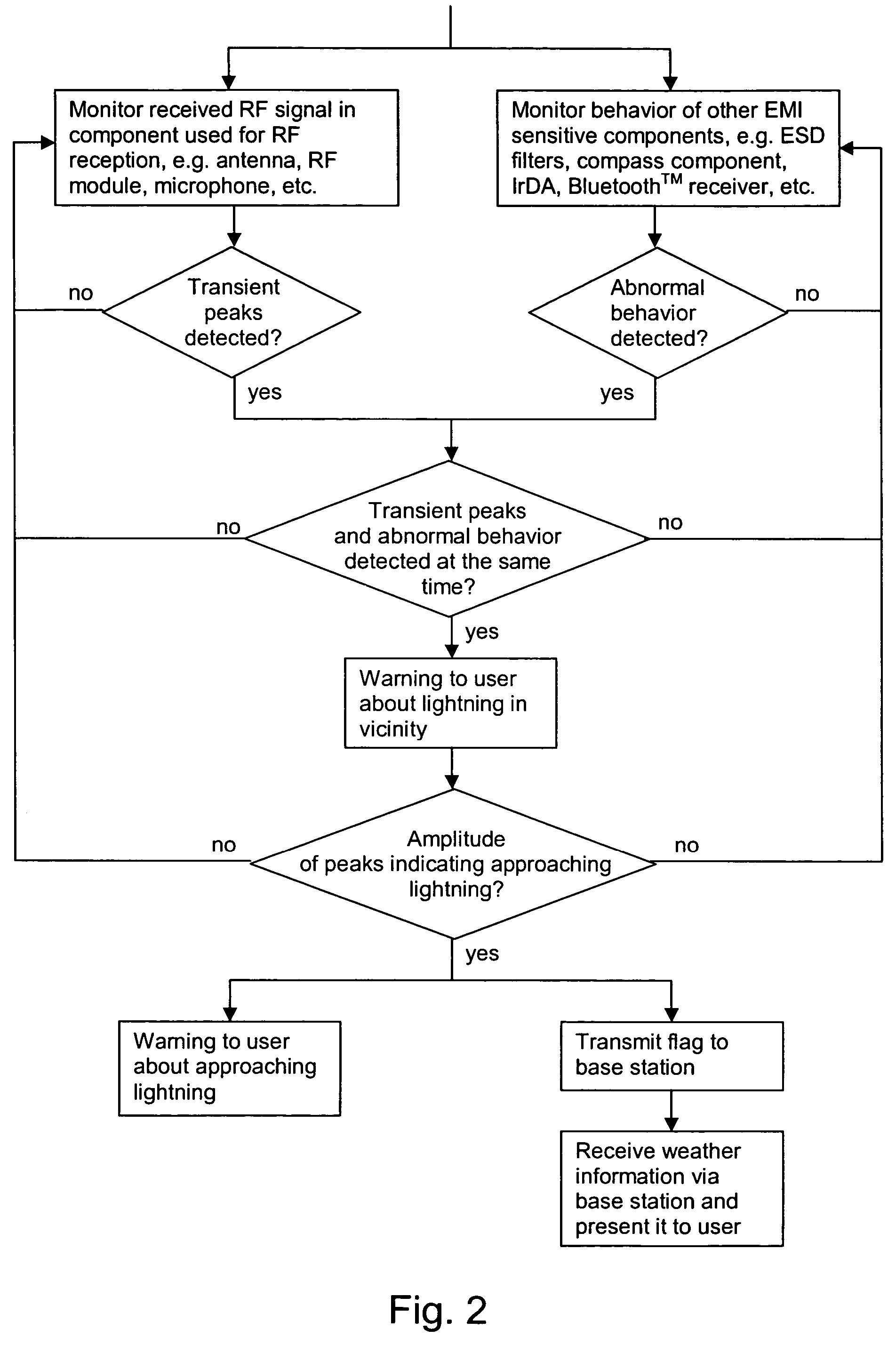Lightning detection
a technology of radiofrequency and detection device, applied in the field of mobile radiofrequency enabled devices, can solve the problems of the most dangerous lightning stroke, the difficulty of prediction, and the major weather hazards of thunderstorms, and achieve the effects of improving the reliability of detection, small extra size, and low cos
- Summary
- Abstract
- Description
- Claims
- Application Information
AI Technical Summary
Benefits of technology
Problems solved by technology
Method used
Image
Examples
Embodiment Construction
[0054]FIG. 1 schematically presents a system in which a lightning detection according to the invention can be implemented.
[0055]The system comprises a cellular phone 10 as a mobile RF enabled device and a base station 30 as a network element of a cellular communication network. In addition, the presence of a thunderstorm 40 is indicated.
[0056]The cellular phone 10 includes a microprocessor 11 with access to an RF module 12, to a microphone 16, to ESD protection filters 17, to a compass component 18, to an infrared transceiver module IrDA 19, to a display 20, to a speaker 21, to a clock 22 and to a memory 23. The RF module 12 is connected to a plurality of antennas 24 and comprises a component 13 for receiving and transmitting cellular RF signals via a GSM antenna, a component 14 for receiving and transmitting WLAN signals via a WLAN antenna and a component 15 for receiving and transmitting Bluetooth™ signals via a Bluetooth™ antenna. It is understood that the cellular phone 10 may i...
PUM
 Login to View More
Login to View More Abstract
Description
Claims
Application Information
 Login to View More
Login to View More - R&D
- Intellectual Property
- Life Sciences
- Materials
- Tech Scout
- Unparalleled Data Quality
- Higher Quality Content
- 60% Fewer Hallucinations
Browse by: Latest US Patents, China's latest patents, Technical Efficacy Thesaurus, Application Domain, Technology Topic, Popular Technical Reports.
© 2025 PatSnap. All rights reserved.Legal|Privacy policy|Modern Slavery Act Transparency Statement|Sitemap|About US| Contact US: help@patsnap.com



